If you haven’t read the post about peat bogs and why they are a fragile, non-renewable resource, make sure you read it here. In this post you will learn about interesting and innovative peat alternatives.
Why Do We Need a Peat Alternative?
Some gardeners and the nursery trade will still argue for the benefits of peat. Peat absorbs 20 times its weight in water. Peat conditions and aerates the soil. Peat is light weight and great for containers. And of course, peat is great for seed starting.
True. To an extent – but at what cost? Read the post about peat bogs and you will understand why we need to ring the alarm bells and stop using peat.
There are multiple excellent peat alternatives. Some of these you can even find right in your home.
What is it about Peat that people love so much?
People love that peat absorbs vast quantities of water and stays moist. That’s the main selling feature. In the heat of the summer who wouldn’t want a little help keeping the flower baskets and pots happy? Just don’t let it dry out. Then it becomes as dry as the Sahara. And repels water.
Decades of research went into developing peat as a horticultural product, supported by a vast marketing machine. We were marketed to love it.
Fast forward to today. Considerable research and environmental concern shows that we are destroying an incredibly slow growing, valuable, centuries old ecosystem by harvesting peat for our azaleas.
There are, in fact, many alternatives to choose from. It is time to undo the damage and embrace new, sustainable peat alternatives.
Peat Alternatives
Extensive multi faceted research and development has been invested in creating peat alternatives over the years. Innovative companies are researching products for both the commercial horticultural industry and home gardeners.
There is still a lot of misunderstanding, lack of interest and lack of marketing on the benefits and uses of the substitutes. It takes a long time and discipline to change bad habits.
Poor quality products early on in development caused people to shy away from the tried and true. However, great strides have been made recently with all kinds of interesting products.
It is important to consider that although something is called a “peat substitute” or “peat alternative” it does not mean that it will necessarily behave exactly like peat. Certain plants will like one formulation for seed planting or soil amendment or mulching better than another. A little experimenting may be necessary. Follow the directions on the packaging of the various products.
Here is a sampling of some peat alternatives. Ask for them at your local supplier.
Coir
Coir is coconut fibre from the husks of coconuts (pronounced “coy – er”). It is a by-product of the coconut processing industry.
Coir reacts the same way as peat in its ability to absorb many times its weight in water. One difference is that coir accepts water readily and re-wets easily. Peat is actually hydrophobic (repels water until it is coaxed a bit). If peat dries out, the water will just sit on top of the surface.
Use coir pellets for seed starting. Can you tell the difference?:
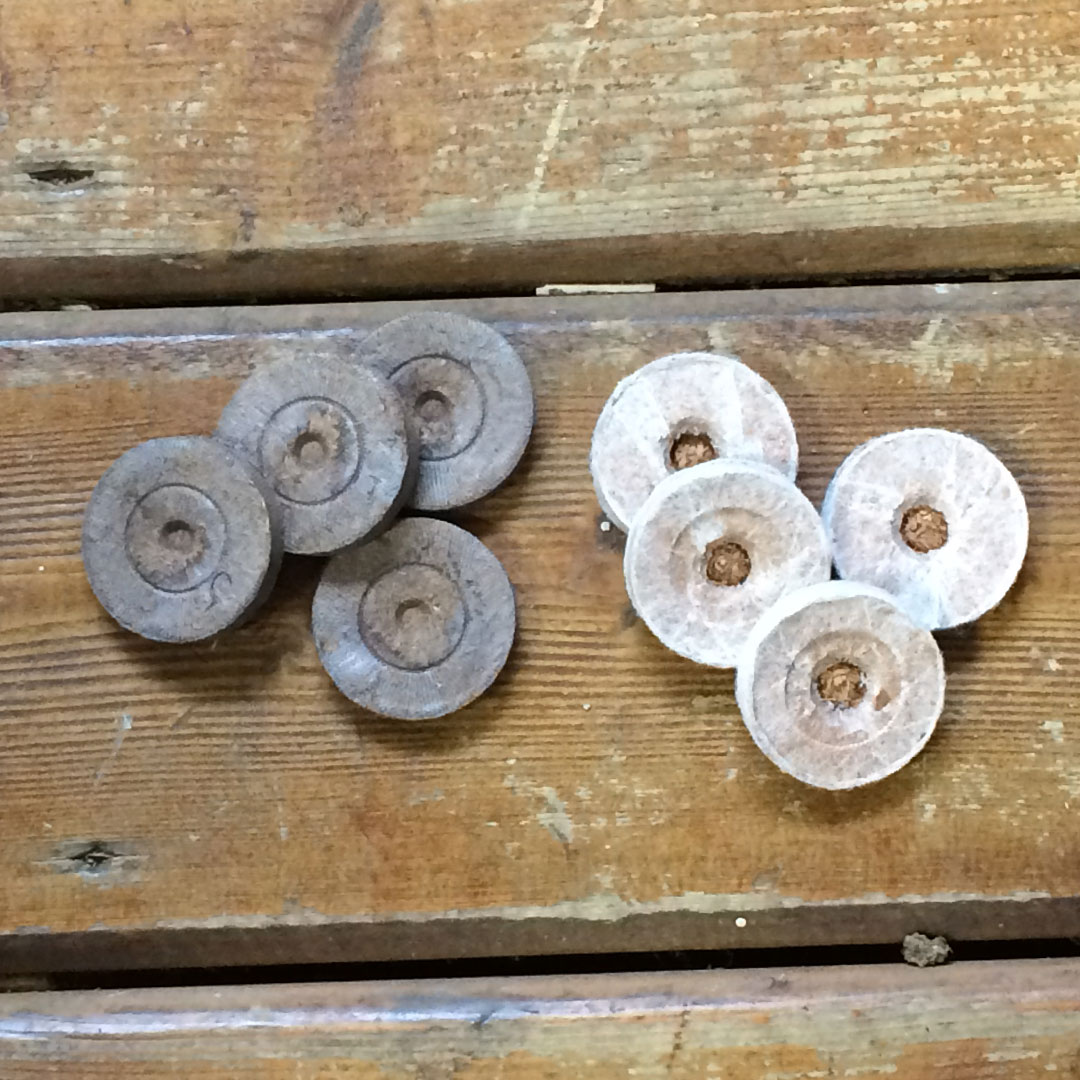
Compressed bricks of coir are also produced. Use the bricks as a soil amendment. Just mix with water in a wheelbarrow and blend into the soil.
Coir, like peat, is naturally slightly acidic. It is perfect to use on many annuals and perennials. After you’ve mixed up a batch, make sure you save some to put in your Easy DIY Newspaper Seedling Pots!
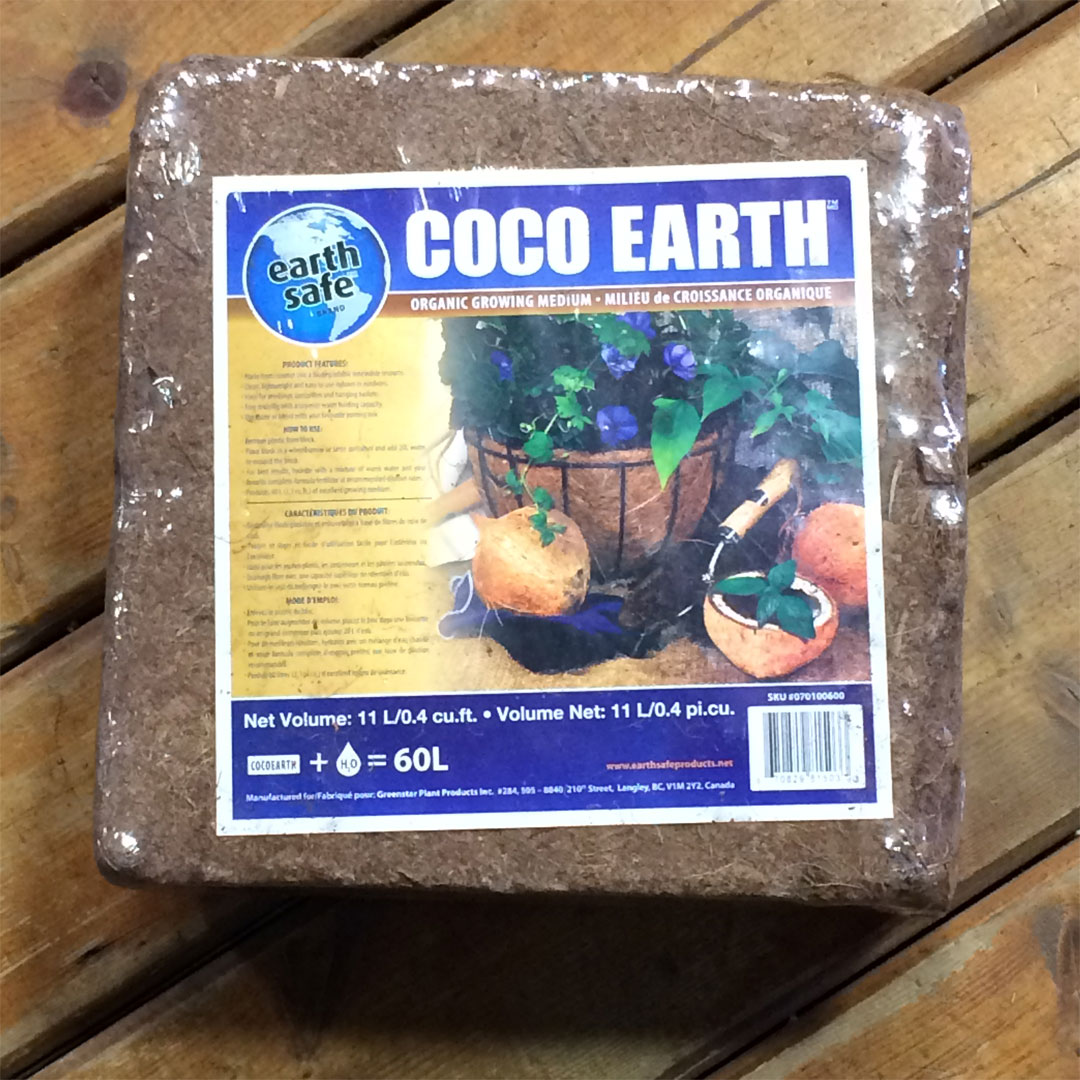
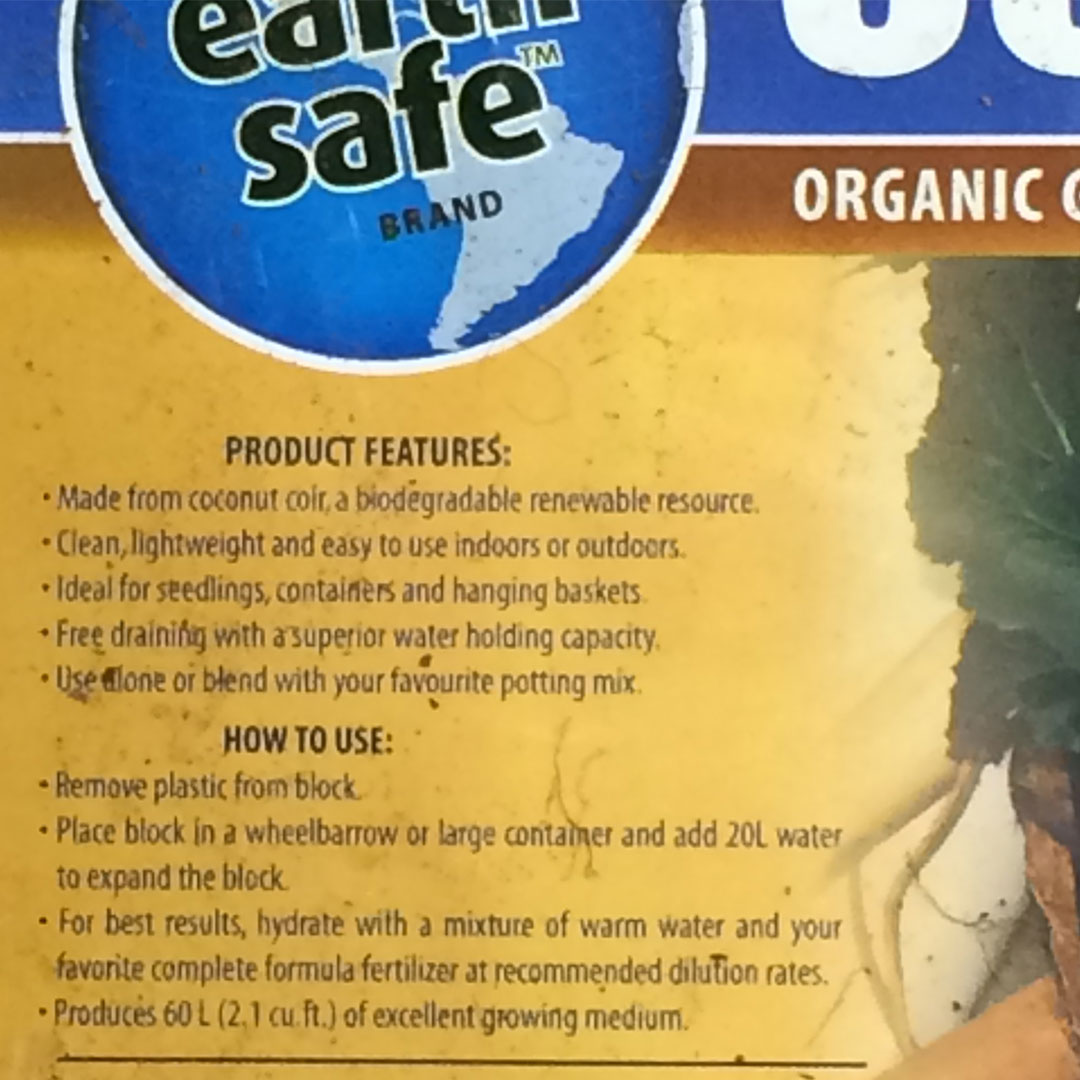
Liners in various shapes and sizes for hanging baskets and balcony boxes are available in abundance in garden centres. These are typically made from coir. They provide excellent drainage and look nice from the outside.
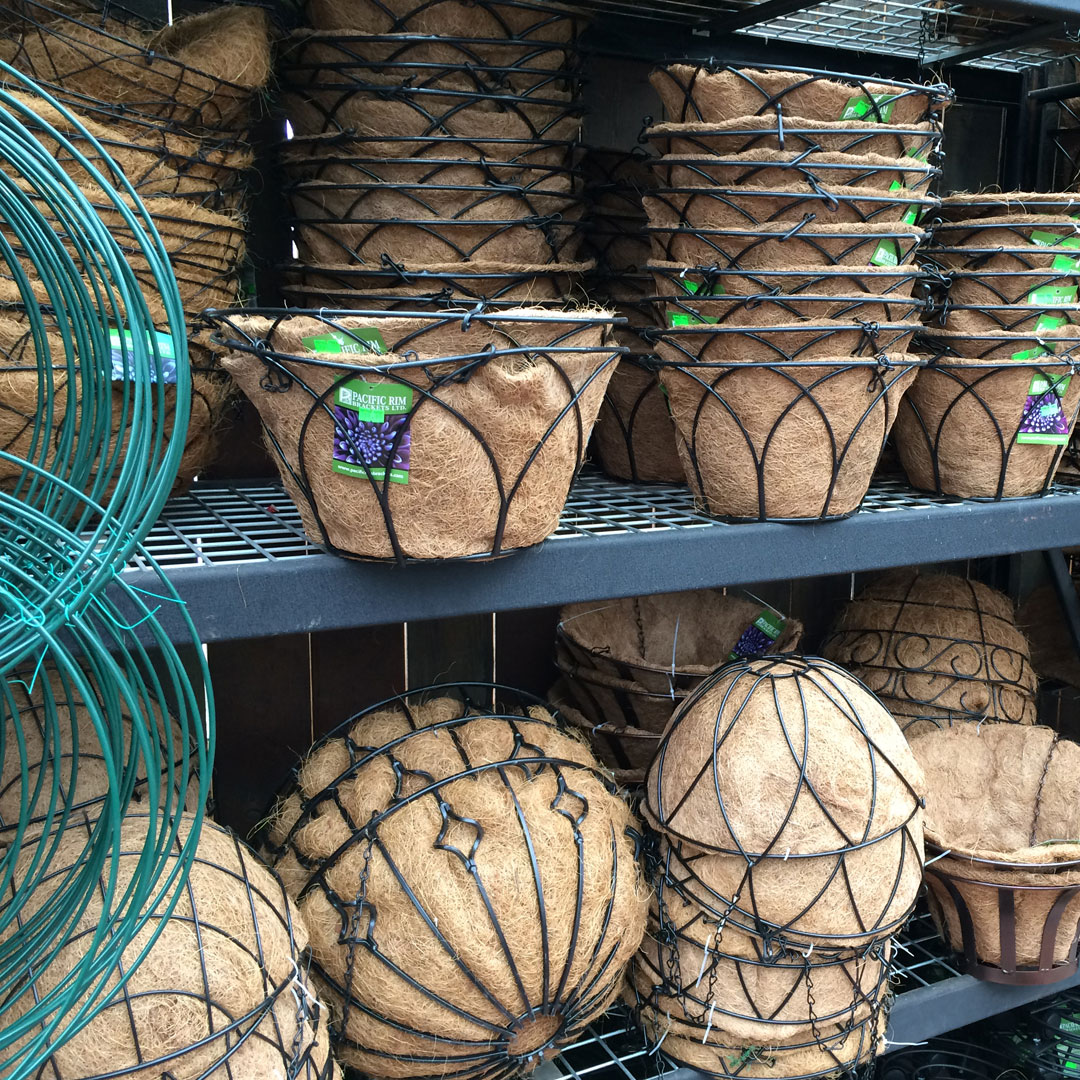
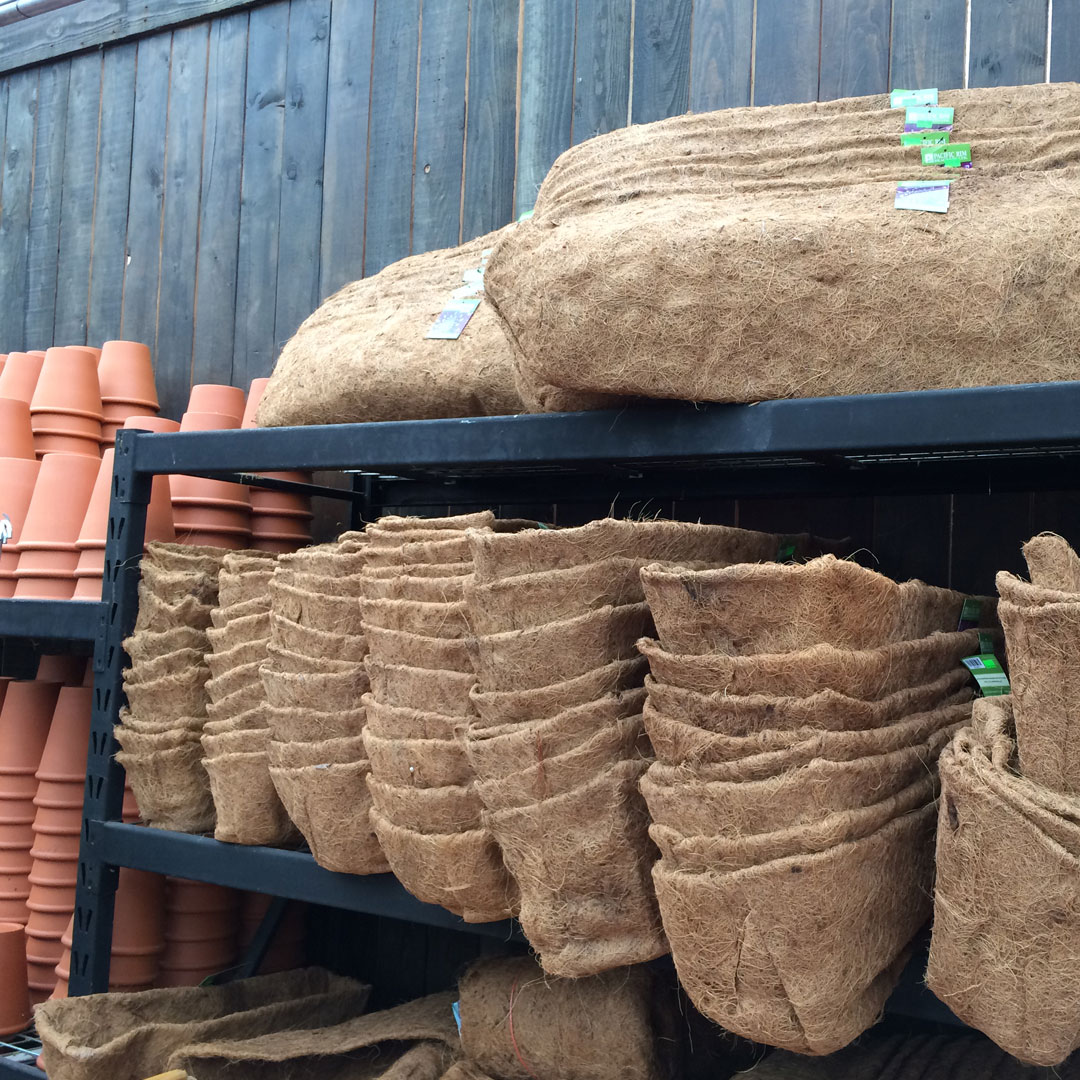
Beats Peat
Another product sold in compressed bales made from coir is Beats Peat. One brick makes 3 cubic feet once hydrated.
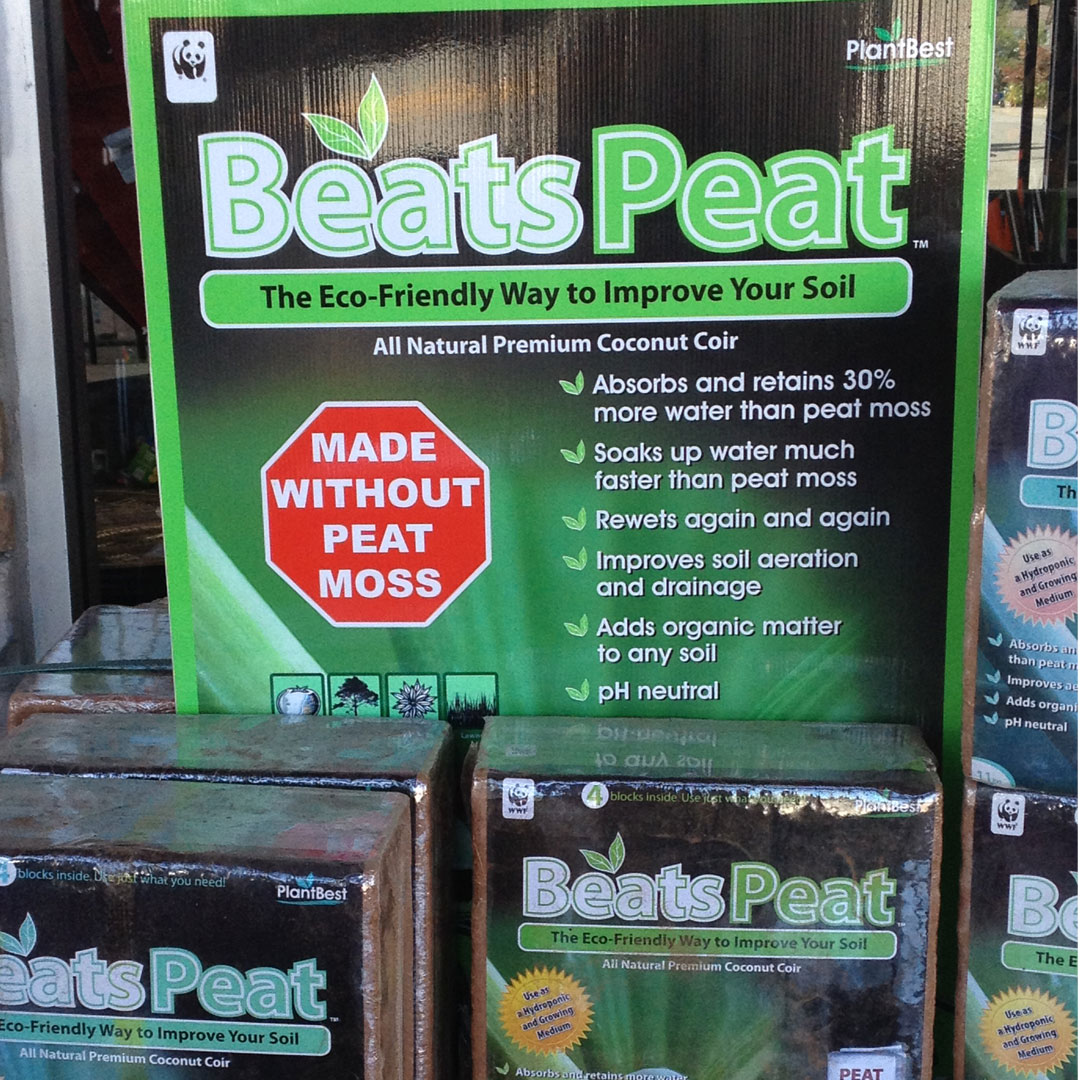
Cowpots
Cowpots are made from dried, deodorized and pathogen free cow manure. They are formed into seedling pots as well as numerous other sizes for many planting uses.
Within 3-4 weeks Cowpots are already breaking down and will completely disappear by the end of the growing season. Pretty fun packaging too.
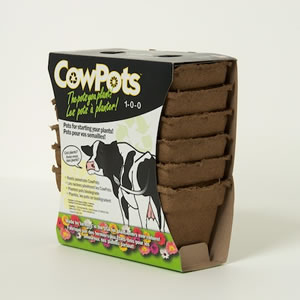
Pulp Containers
Various shapes and sizes of pulp based containers are ubiquitous in our daily lives. They are made from recycled paper fibres. The pulp is molded into egg cartons, take out food and drink trays, protective packaging inside cardboard shipping boxes and of course seed starting pots, among many other uses. You may have seen them in larger sizes containing rose bushes or small trees in the garden centres as well. Pulp containers are super sustainable because they are made out of recycled materials, they biodegrade readily and they can be recycled again.
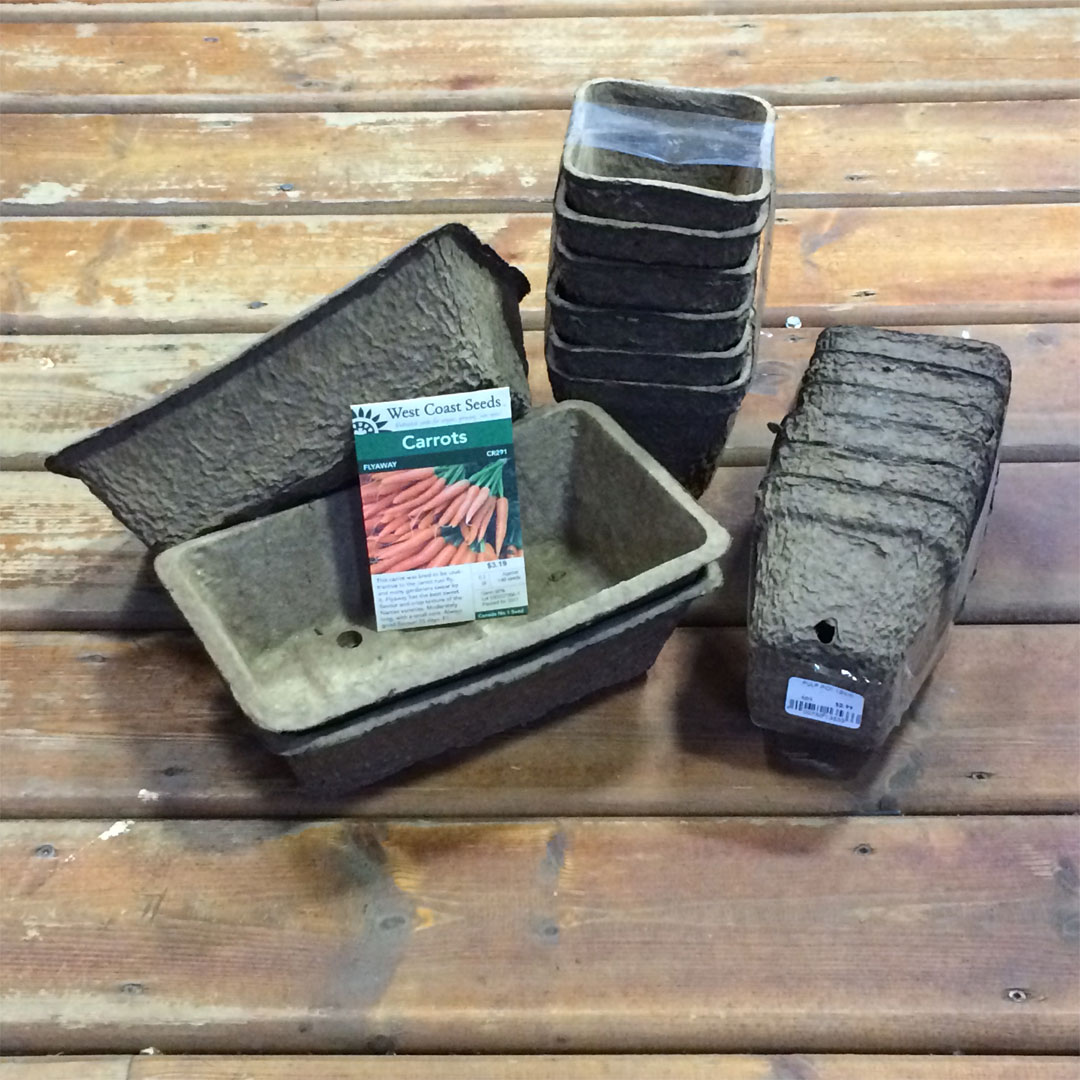
RePeet
Another product produced by cows. Taken from the Organix website “RePeet™ is digested dairy manure which is processed through an anaerobic digester”. Apparently the end result is a product that looks, feels and smells like peat moss. The company touts that in blind testing, their product was not distinguishable from actual peat moss. I have not seen RePeet in my community yet, but if anyone has tried it, post in the comments!
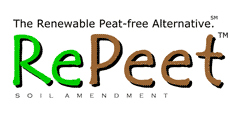
Rock Wool
Rock wool is a manufactured product that took its cue from nature. Basalt rock and chalk are melted at 1600C and spun in a chamber that renders the molten mass into fluffy strands. Think candy floss.
If you’ve ever had the extraordinary experience of being close enough to a volcano to see fluffy strands floating in the air, this is the same type of product. Seriously, post in the comments if you’ve ‘bin there, done that’! It sounds so cool.
After the rock wool is spun, the strands are formed into mats and cut into the various shapes and bricks. Rock wool absorbs about 80% of its volume in water. The remaining 20% are air pockets allowing the roots to breathe. Rock wool is a staple in the hydroponics industry.
One key difference with rock wool is it is devoid of any nutrients. Every time you water you need to feed the plants too. Another important feature is that it does not decompose. So make sure you reuse your rock wool.
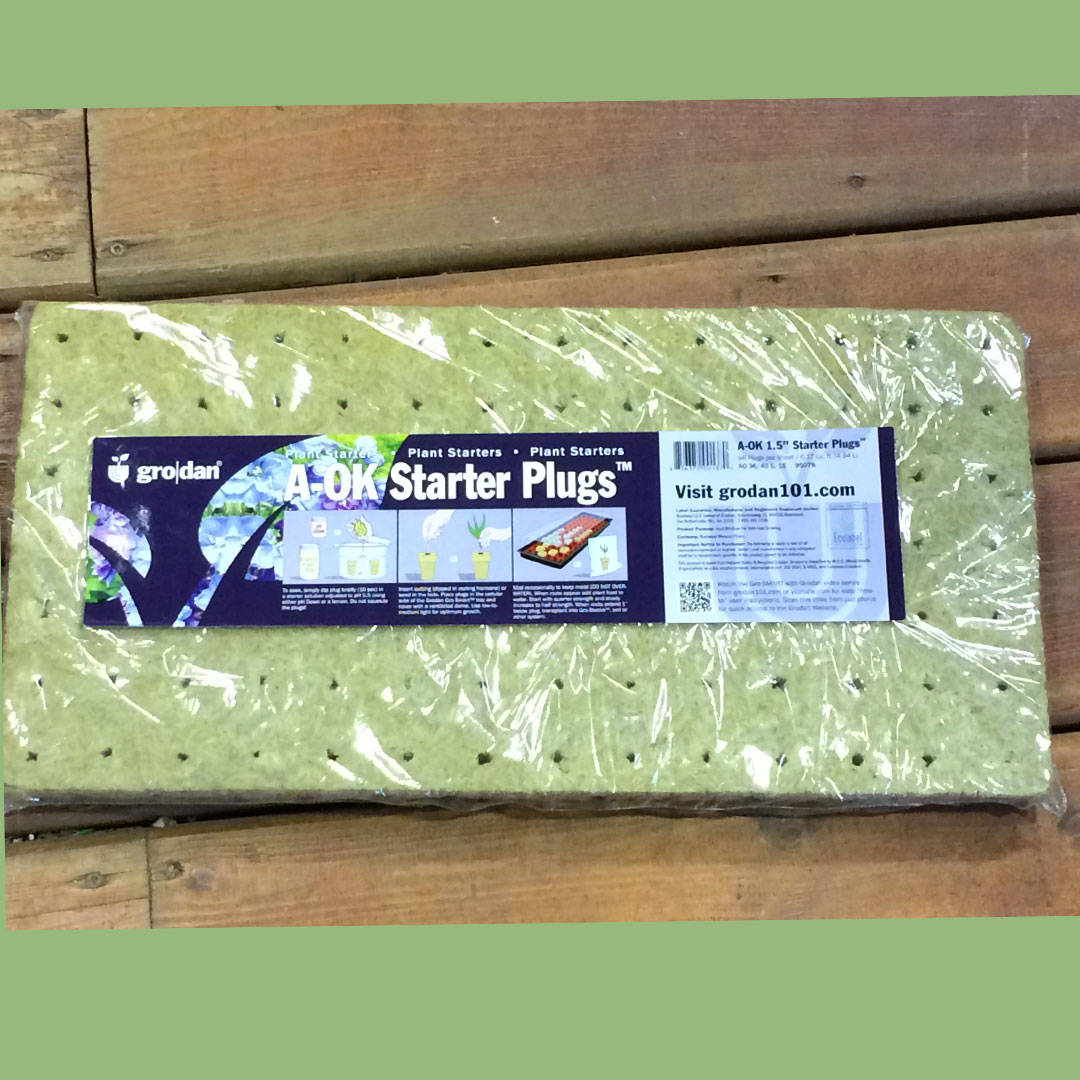
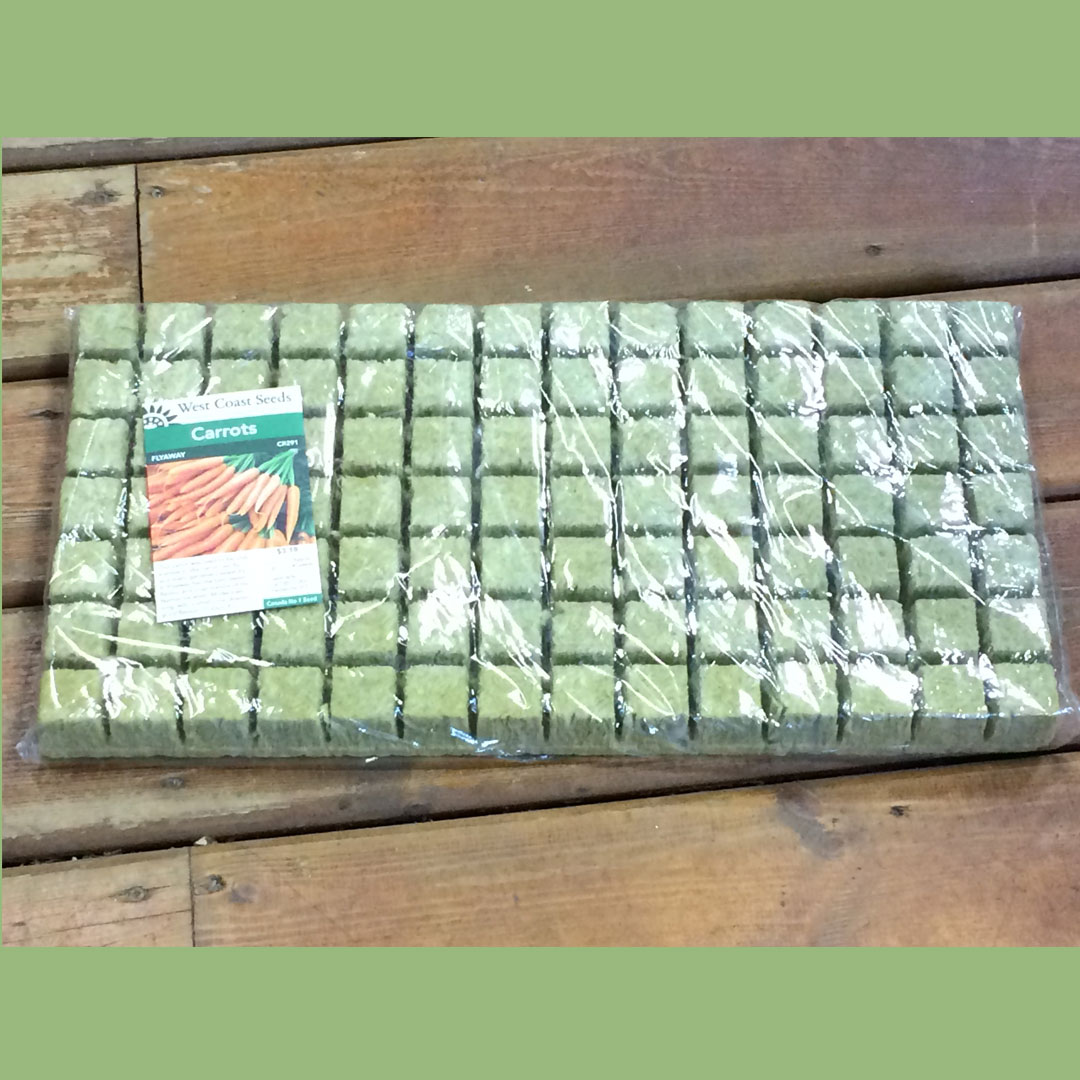
Leaf Mold Compost
Nurseries are experimenting with leaf mold compost as a growing medium and soil amendment. Leaf mold is just decomposed leaves. You can rake up a pile of leaves into the corner of your yard, chop it up a bit (run over it with the lawnmower) and be on the road to creating a beautiful soil additive. You don’t have to wait for the leaves to decompose either. In addition, they make great mulch, don’t repel water, or blow away easily.
Other Soil Enhancers
Other soil enhancers, used to lighten your soil if there is a lot of clay for example, include various types of wood waste. This can be anything from wood chips, bark chips or sawdust. Some garden centres are experimenting using spent mushroom compost.
You can now buy composted garden or green kitchen waste in some areas, as more and more municipalities are collecting household organic waste curbside. But this type of composting is easy enough to create on your own. Some people add used coffee grounds to their garden beds. Of course well-rotted farmyard manure is the traditional go-to.
What should you do?
Ask for peat alternatives at your local nursery or garden centre. If they say they don’t carry anything or have very few options because they don’t sell – educated them!
The more people asking for alternatives the better. Make your voice heard.
Make it your mission to source and pick up a new peat alternative each season and give it a go. How does it work? How does it compare? Post your comments!
Don’t just go for the cheapest product. Peat has been supplied for so long that processing and getting it to market can sometimes be cheaper than its new sustainable cousins.
Check the compost or soil conditioner you are buying – it can have a large percentage of peat unless it specifically says peat free.
Have you tried any of these peat alternatives? Post in the comments!



